Published Apr 24, 2024
Stuck in a Loop: The Best of Star Trek's Time-Jumping Episodes
From The Next Generation to Discovery, going around and around is sometimes very revealing.

StarTrek.com
In the Season 5 episode, "," Captain Burnham and Commander Rayner find themselves both stuck in a loop, but also, jumping all around the timeline of the titular starship. From the point before the U.S.S. Discovery was launched, to pivotal moments in Season 4, Season 3, Season 2 and even very early in Season 1, Rayner notes at one point that, "We’ve gone back in time to when you went forward to the future. That’s a little confusing."
Throughout all of Star Trek's history, time travel has been just as propulsive to the narratives as space travel. But, within the various time travel stories of Trek, there is a special kind of time-skipping episode — the time loop story. Discovery has recently shaken-up this formula with "Face the Strange," but many elements of this episode pay homage to a proud Star Trek tradition. Here’s the history of the best time loop, and time-jumping episodes across the entire Final Frontier.
"," (Season 5, Episode 18)
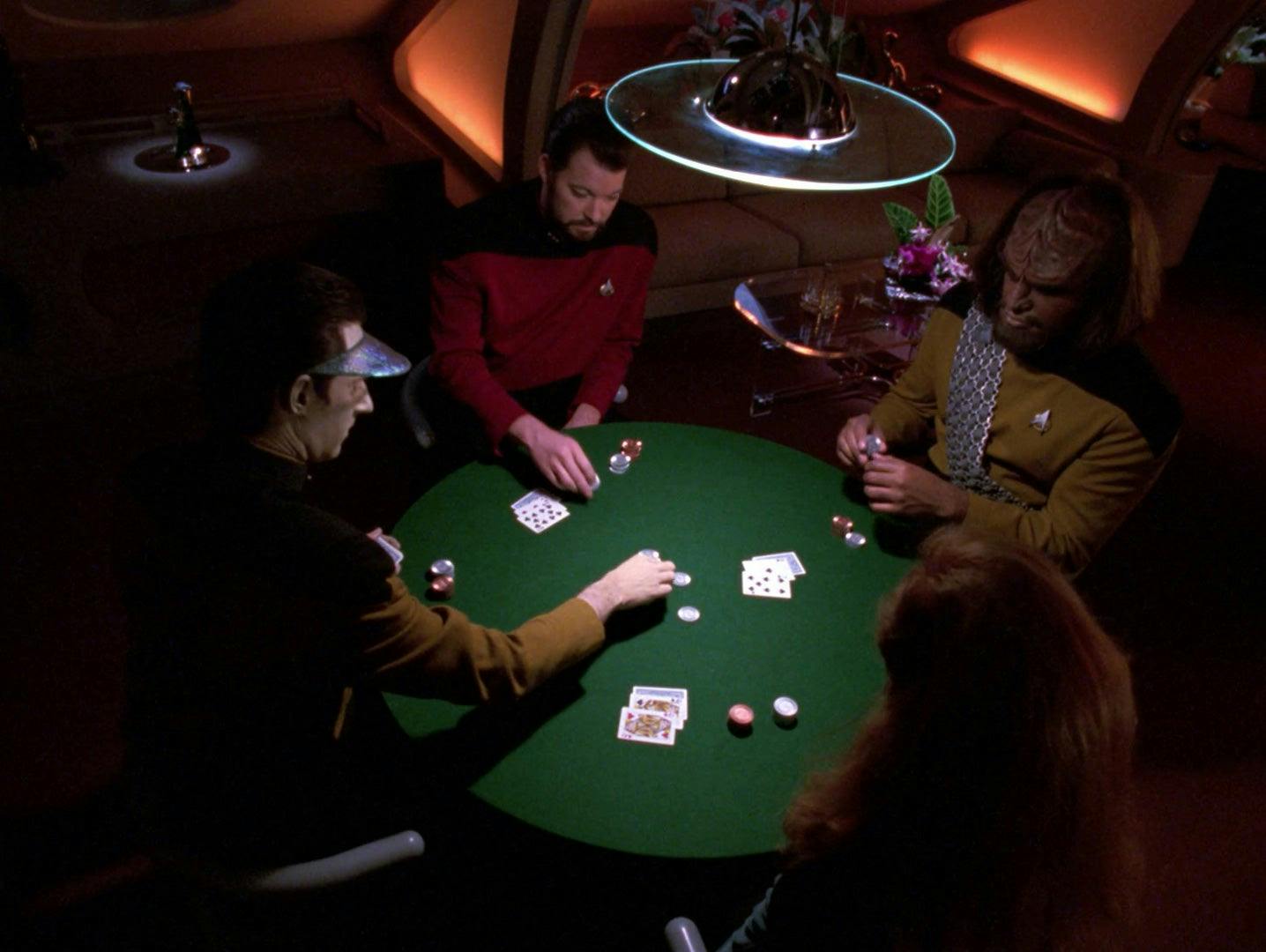
"Cause and Effect"
StarTrek.com
Perhaps one of the greatest science fiction episodes of all time, The Next Generation set the gold-standard for how to do time loop episodes.
When the Enterprise collides with another starship in the first scene, this episode poses one question right off the bat: What happens after you blow up the ship — and everyone on it — before the credits roll? The answer is mostly connected to whether or not we can even remember when we're stuck in a loop. Without actually spoiling this classic episode, let's just say thank the stars for Dr. Crusher and Data.
The brilliance of "Cause and Effect" cannot be overstated, but the 21st Century legacy of this episode is utterly appropriate. When Geordi reveals how the time loop works, Riker says, "You mean we could have come into this room, sat at this table and had this conversation a dozen times already?" This scene has become a popular meme format across various social media platforms, satirizing the time loop of some aspects of the internet experience.
"," (Season 7, Episode 11)
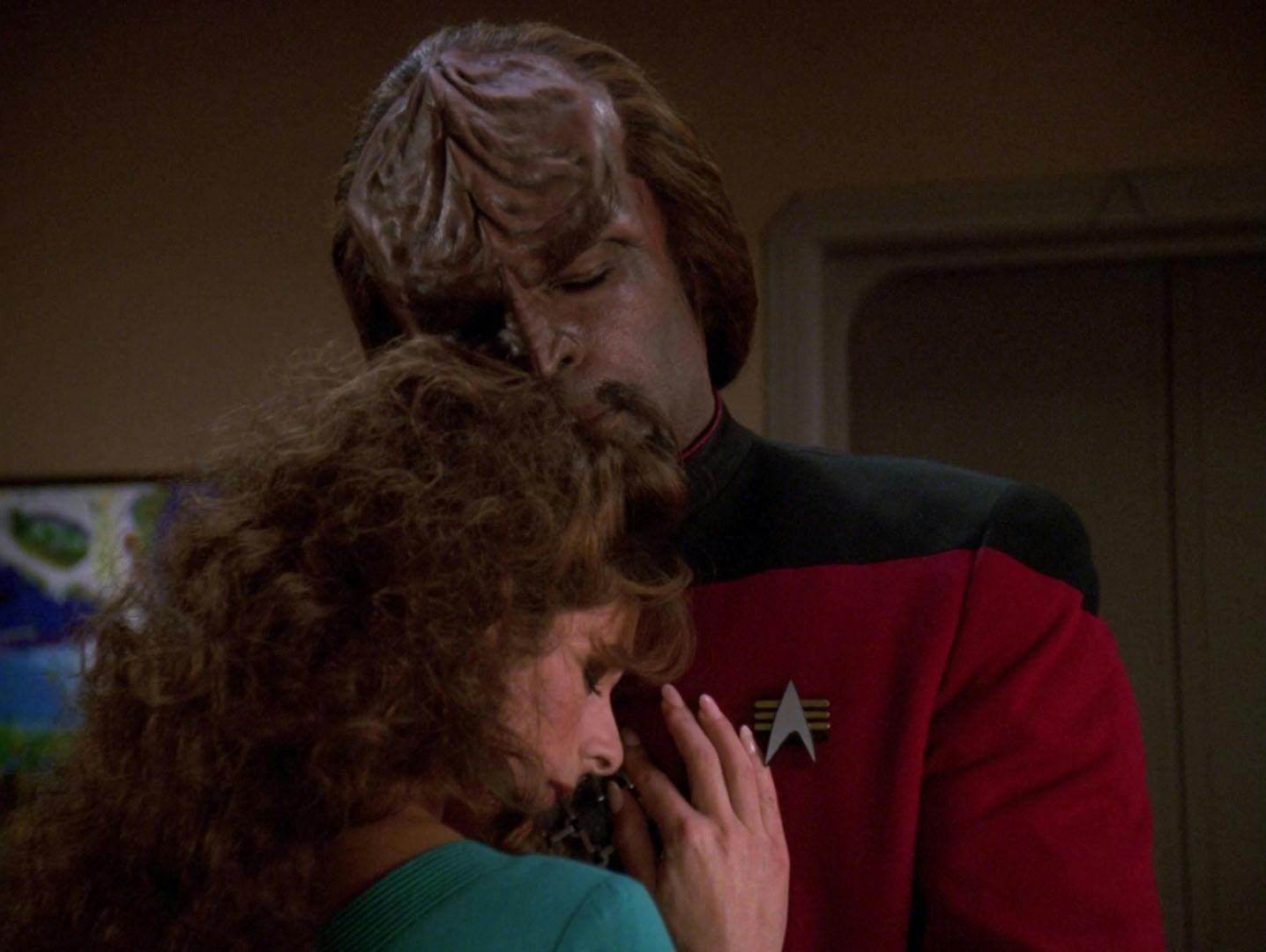
"Parallels"
StarTrek.com
Arguably, when Worf starts slipping between realities in "Parallels," the story is more focused on other dimensions, rather than a true time loop. But, each time he pops into a new reality, Worf does tend to reply to his own personal log, which is what began the episode.
Obviously, in each new timeline, Worf's personal log is different, and because he checks it so often in the episode, this gives "Parallels" the feeling of a time loop story, even though Worf is technically moving both forward in time, and also, side-to-side.
On top of all of this, "Parallels" feels time-loopy because so many ideas and plot points from previous seasons of The Next Generation are revisited here. From references to "," to the return of Wesley Crusher, "Parallels" brings all the good things of TNG back around again for another look, from a different point of view.
"," (Season 7, Episode 25)
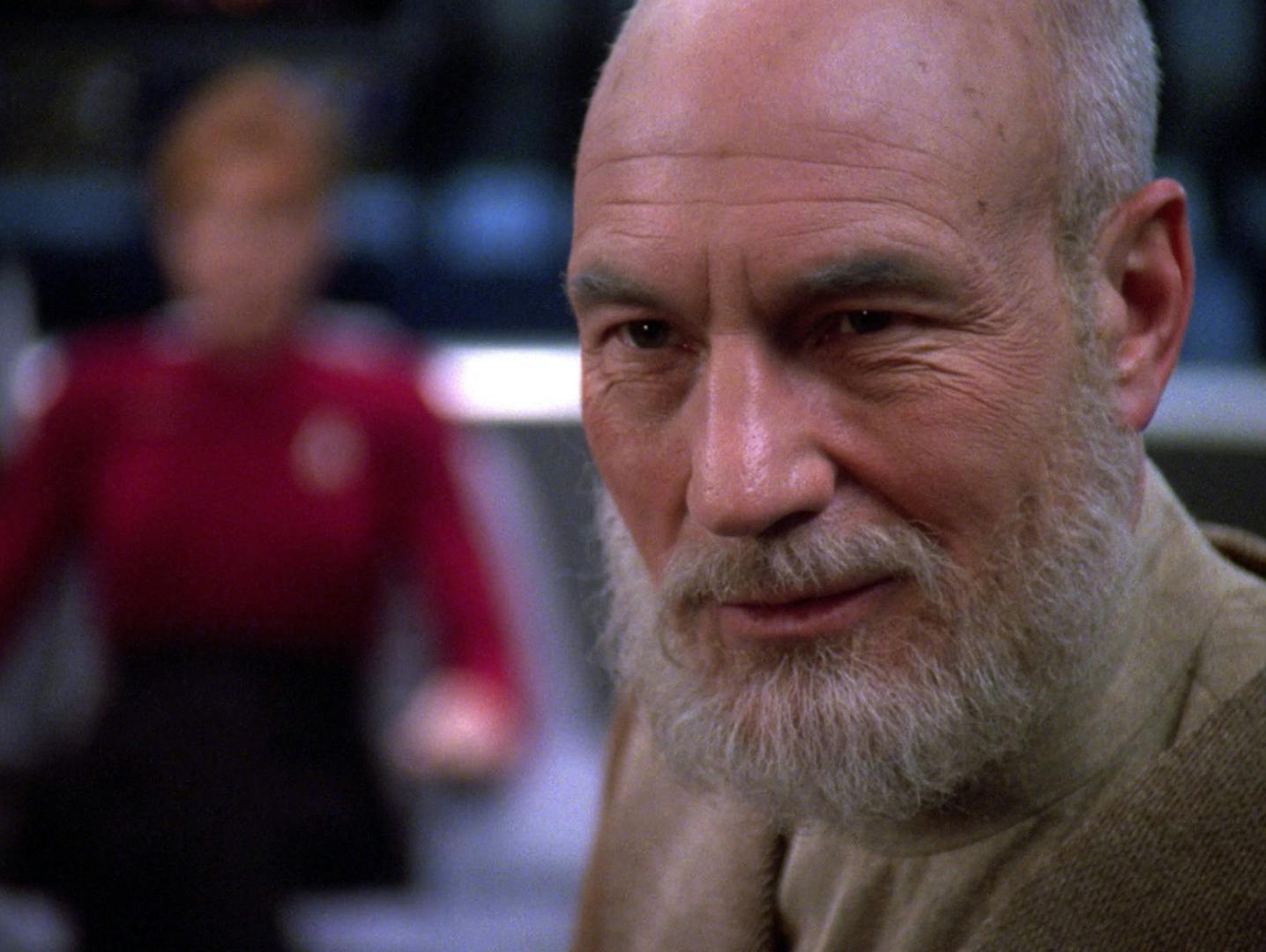
"All Good Things..."
StarTrek.com
Speaking of the best of The Next Generation, the immortal series finale is, from a certain point of view, one big time loop. As Jean-Luc Picard shifts between past, present, and future, the biggest mystery of "All Good Things…" is what caused the anomaly in the Devron system? Eventually, we learn that the ending and the beginning of this story are inextricably connected, a paradox that creates a kind of loop that must be broken.
Twenty-nine years later, in the episode, "," Captain Liam Shaw references this moment, and notes that Picard and Riker have a "real chicken and egg thing going on." It doesn’t get any more time-loopy than that!
"," (Season 3, Episode 17)
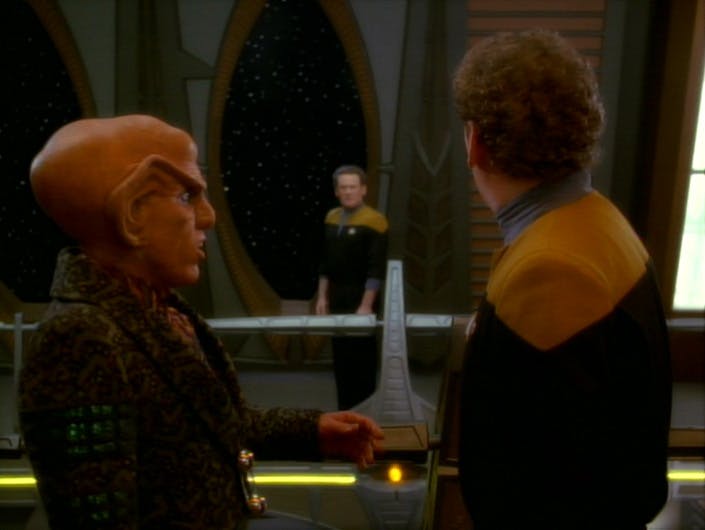
"Visionary"
StarTrek.com
When O'Brien starts seeing another version of himself appearing randomly throughout the station, Dr. Bashir briefly floats the idea that he's just having really boring hallucinations. But, as the episode goes on, it becomes clear that O'Brien is actually seeing brief moments in the future, and then, catching up to those moments in the present.
"Visionary" messes with what we expect from a time loop episode, because in all instances of future occurrences, there are literally two O'Briens present, and, when the past O'Brien catches up to the future moment, the duplication effect happens again, creating a kind of visual loop for the audience. The funny thing is, in several instances, the future doesn't play out exactly the way past O'Brien saw the first time, making this one of the wobblier time loops in all of Star Trek.
"," (Season 5, Episode 24)
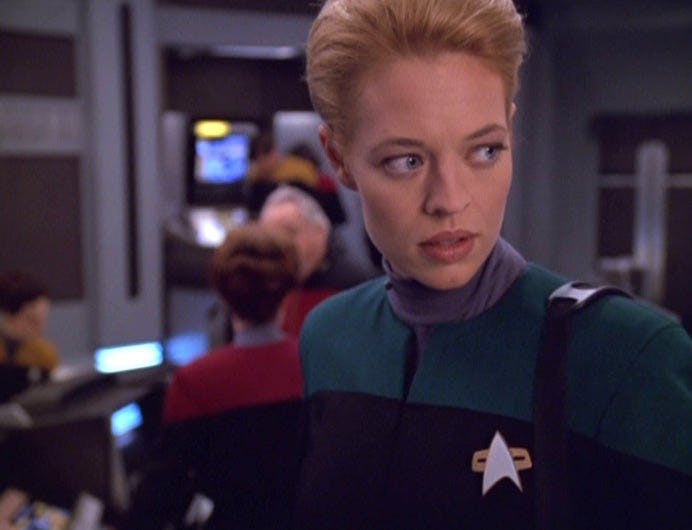
"Relativity"
StarTrek.com
In a move very similar to Discovery's "Face the Strange," this unforgettable episode of Voyager briefly takes us back to a point before the series even begins, showing us Janeway's first moments on Voyager before the ship left the Utopia Planitia Shipyards on Mars. (In "Face the Strange," Burnham and Rayner see Discovery in a drydock on Earth well before the events of Season 1.)
But, Voyager's jaunt into its own prehistory is just the beginning of a very specific type of time jumping episode. Here, Seven of Nine isn't exactly repeating a loop, but, making several attempts at different times, to prevent a bomb from destroying Voyager. As Tuvok aptly puts it when encountering one version of Seven from the future, "Like many time paradoxes, it's improbable, but not necessarily illogical." Because this episode features multiple versions of Seven, and leaps to various eras of Voyager, it pairs very nicely with Burnham and Rayner's similar jumps in "Face the Strange." Especially the moment where Seven meets herself.
"," (Season 7, Episode 11)
"Shattered"
StarTrek.com
Does Voyager have the best timey-wimey episodes in all of the Trek franchise? It's hard to say, but if there's another Trek episode that feels like an older sibling of Discovery's "Face the Strange," it's almost certainly "Shattered," a fan-favorite episode from Voyager's final season. Here, the captain and the first officer — Janeway and Chakotay — find themselves on a version of the ship that has been split into different time periods.
"Shattered" is one of Star Trek's greatest retrospective episodes, touching on moments across all of Voyager's story, and teaming past versions of characters with ones closer to the present. It's a touching story, and, structurally, it's wonderfully homaged in Discovery.
"," (Season 1, Episode 7)
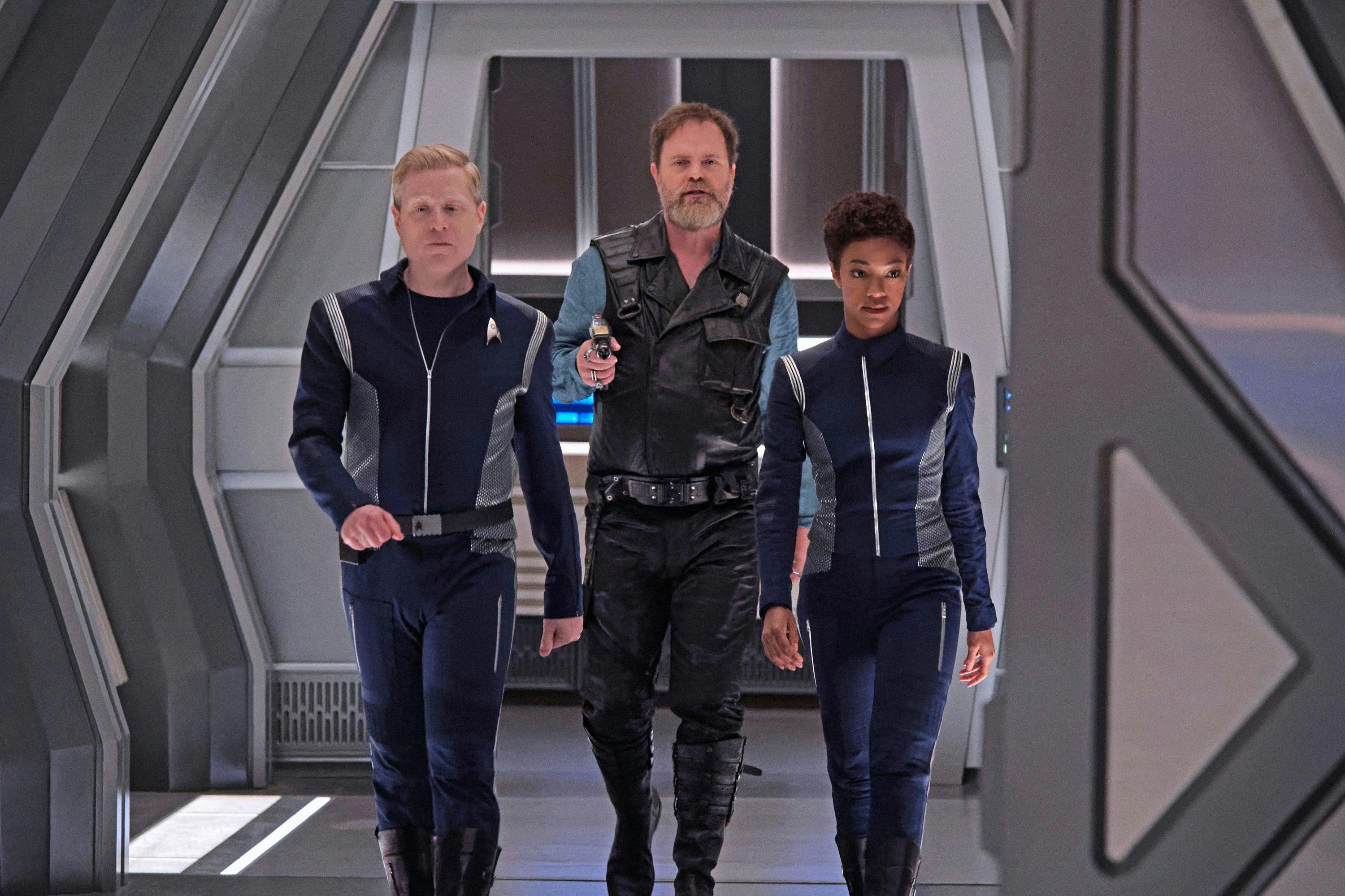
"Magic to Make the Sanest Man Go Mad"
StarTrek.com
One of Discovery's stand-out moments from Season 1 fully set the stage for "Face the Strange" in Season 5. In "Magic to Make The Sanest Man Go Mad," Harry Mudd sets the ship on a true time loop, in which only Stamets can truly remember what is going on. Like in "Face the Strange," Stamets has a perception that exists outside of time, thanks to taking on the Tardigrade DNA in "Choose Your Pain."
This detail comes in handy in "Face the Strange," where Burnham and Stamets again have to re-team to get Discovery out of a time loop caused by nefarious enemies using time travel technology as a weapon. In Season 1, Burnham and Stamets barely knew each other, much like Burnham and Rayner's relationship in Season 5. But, if there's one thing a time loop or time-jumping episode can do, it’s make people who are just colleagues into best friends for life.





